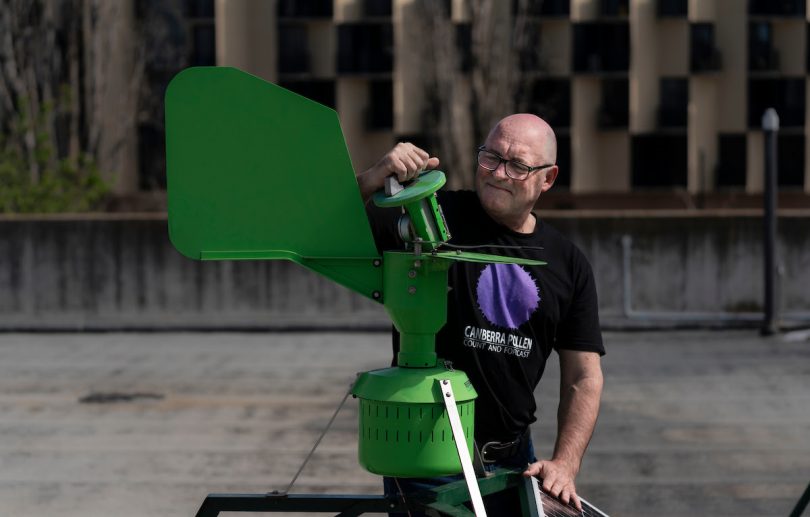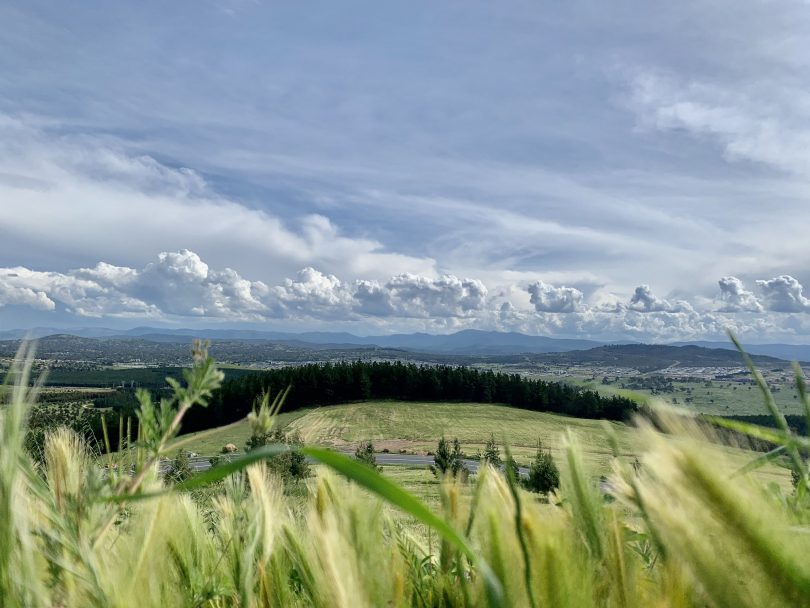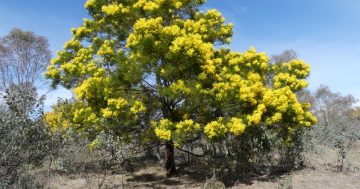
Professor Simon Haberle is predicting another bumper pollen season for Canberra. Photo: Jamie Kidston/ANU.
Australia’s “allergy capital” is about to get sneezier, with heightened pollen counts recorded in the lead up to what looks set to be a very congested spring.
Canberra has already had two extreme pollen events on 12 and 16 August and, while elevated levels are not uncommon at this time of year, extreme events are unusual.
It’s bad news for many in the ACT, with Canberrans having the highest rates of hay fever of any city in Australia, said leading pollen expert Professor Simon Haberle.
One in three people in the capital suffers from some form of allergic rhinitis, costing the local economy at least $170 million a year due to its impact on health and productivity.
EXTREME to HIGH levels of allergenic tree pollen (Cypress Pine and Pine trees) recorded today confirming the start of the allergenic tree pollen season in Canberra. Images of many Cupressaceae pollen and Pinus pollen (circled red) on our microscope slides today. pic.twitter.com/4SD1MY6nYK
— Canberra Pollen (@CanberraPollen) August 16, 2021
The extreme levels this week were likely caused by the wet winter and indicate a “bumper year for airborne pollen in and around the ACT”, Professor Haberle said.
“A combination of the warming weather, a wet winter with high soil moisture and windy days are all signs that are pointing to another record pollen season.”
The good news is Canberrans have a slight reprieve over the next week and ahead of spring, with the grass pollen forecast expected to remain low until at least next Tuesday (23 August), according to the pollen monitoring website Canberra Pollen.
The site, and its app, is run by Professor Haberle with the support of the ANU.
Professor Haberle, who also operates under the moniker That Pollen Guy on social media, wants to “clear the air” for allergy sufferers by mapping and tracking pollen risks across Canberra.
The maps will take garden plants and street plants into consideration to map which parts of Canberra may be worse for allergy sufferers.

Canberra is about to go from one bad pollen season to another. Photo: Canberra Pollen Twitter.
Dr Simon Connor, who is developing the maps alongside Professor Haberle, said Canberra’s leafy inner suburbs were the worst for tree pollen allergies, while the outer suburbs were more exposed to grass pollen allergies.
The new alerts follow on from the ACT’s longest and strongest ever pollen season, which only ended back in March.
It also coincides with magpie season, with most swoops occurring between August and October, and as late as December.
And there’s no app for that.
More information about pollen counts in the region, including weekly forecasts and past reports, can be found on the Canberra Pollen website.
Original Article published by Dominic Giannini on The RiotACT.







